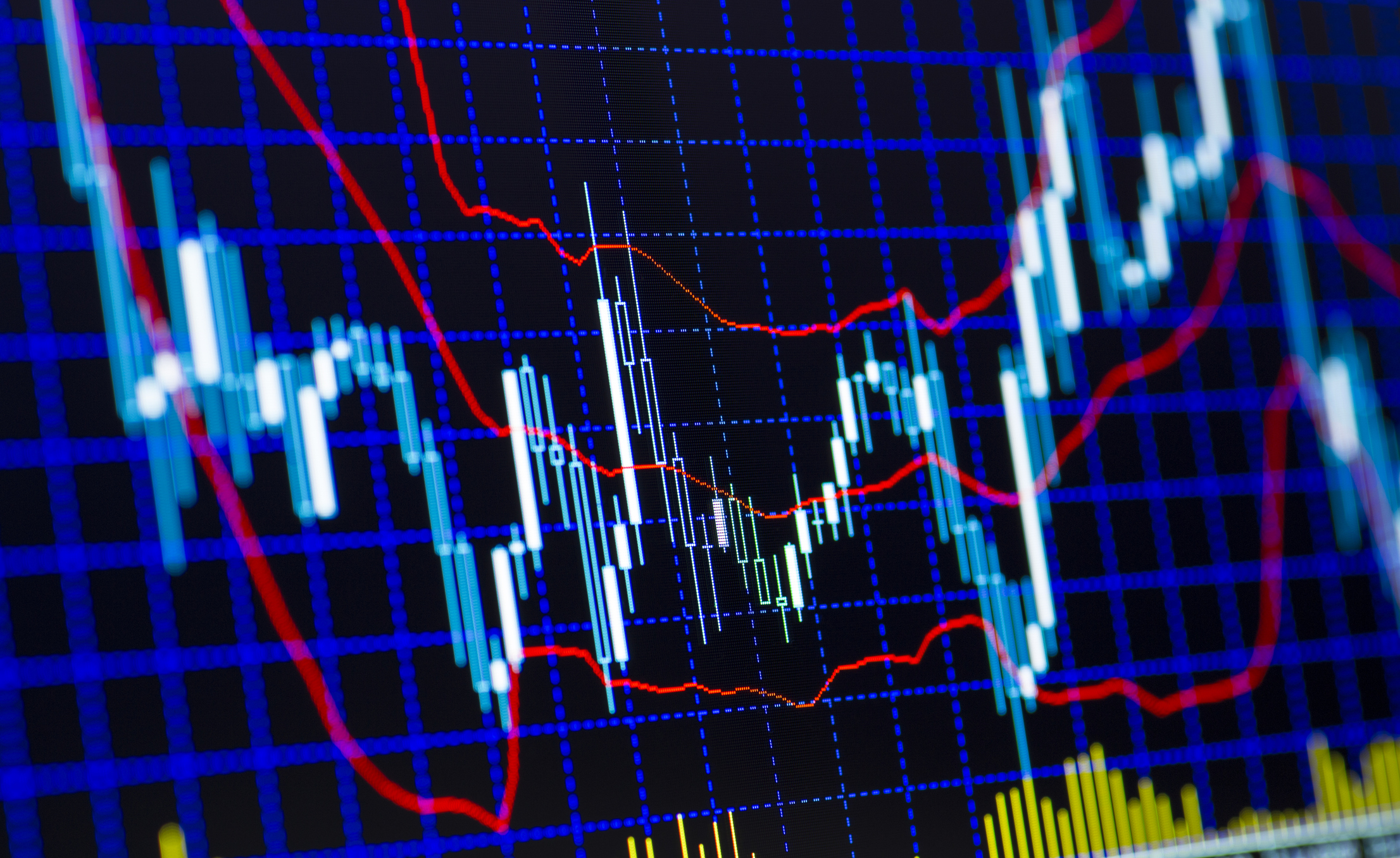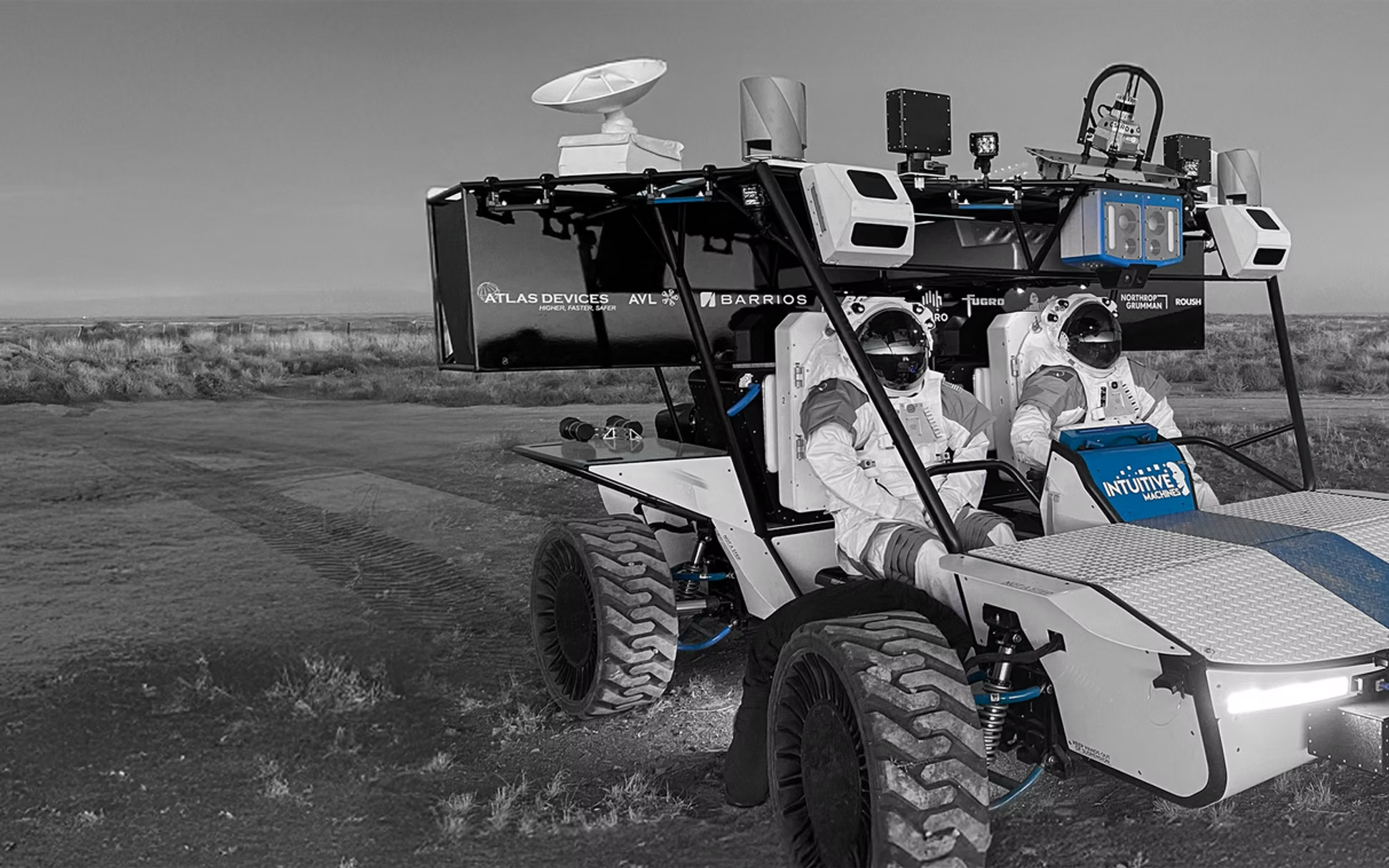
Now that 2018 has reminded investors just how volatile the stock market can be at times, it’s important to look at the big picture. The selling pressure of October has rattled even some of the largest bulls on Wall Street. It’s also important to consider that this current bull market is now over nine and a half years old, and it’s very possible the selling pressure can continue.
Fear and greed are the two driving forces when it comes to the decision of whether to buy or sell a stock. When the markets are screaming higher, as we have seen frequently over the past few years, many investors said that they just couldn’t wait to get an opportunity to buy some of their favorite companies of the bull market — if they would just dare pull back 20% or 25%. That has happened as a result of October’s major selling, and then some!
The undeniable problem investors run into is that when the pullbacks finally arrive, most investors become paralyzed by fear. That has been the case in October of 2018, even though many stocks seem as though they are pricing in the death of growth in their business and in the economy. Slowing growth, trade war fears, midterm elections, rising interest rates and unwinding of the great growth names, and a few dozen other issues, have sent the bull market into correction mode. At what point does selling pressure overshoot on the downside?
After a Finviz review on Monday, there were a whopping 225 members of the S&P 500 that have sold off by 20% or more from their 52-week highs. And to make matters worse, almost 20% of the S&P 500 stocks were down 30% or more from those highs. These losses are astronomical when you consider that as of Monday’s close the S&P 500 and Dow Jones industrial average were down 10.2% and 9.3% from their respective 52-week and all-time highs.
24/7 Wall St. has compiled a list of 25 great stocks that had been loved by investors during the major bull market but now have sold off 20% or more. With only one exception, the list cuts off at 40% because the technical damage done when companies lose that much value becomes too large for any bottom-fishing investor to trust. We also have screened out companies tied to autos, oil and gas, banking and financial services, and other troubled sectors that are littered full of major losses so far in 2018.
The reality is that nobody can keep picking absolute bottoms. And please understand that investors should never plow in all at once trying to catch the proverbial falling knife. Just because stocks start looking oversold or like great values does not in any way mean that the market cannot drag these shares even lower. That said, these are all great companies that investors have wanted to own during the great bull run.
Here are 25 of the solid bull market stocks that were down at least 20% from their 52-week highs as of October 29, 2018. The exact drop may have changed due to Monday’s selling, but this was how much each was down from their 52-week when the report was compiled. Additional color has been added on each.
Lowe’s Companies Inc. (NYSE: LOW) was last seen trading at $92.86, down over 21% from its 52-week high of $117.70. Its current market cap is $75 billion, and its new share price comes with a dividend yield of 2.1%. A slowing in housing trends and an underperformance on metrics versus Home Depot has led Lowe’s lower. The company has not issued end-of-the-world guidance, and analysts are still looking for earnings and revenue growth in 2018 and 2019.
Intel Corp. (NASDAQ: INTC) was last seen trading at $45.40, down over 21% from its 52-week high of $57.60. Its current market cap is $207 billion, and its new share price comes with a dividend yield of 2.6%. Intel has suffered with the major chip stocks, albeit not as much as many peers. The Dow stock actually maintained strong guidance for the remainder of 2018, and being a little over 10 times expected earnings doesn’t exactly sound too bad for the world’s top processor company.
United Parcel Service Inc. (NYSE: UPS) was last seen trading at $105.07, down over 22% from its 52-week high of $135.53. Its current market cap is $90 billion, and its new share price comes with a dividend yield of 3.5%. UPS shares peaked in the very few first days of 2018, and things were actually lower than here back in March for what has been one of America’s top transporter of goods.
Sherwin-Williams Co. (NYSE: SHW) was last seen trading at $366.76, down over 24% from its 52-week high of $479.64. Its current market cap is $34 billion, and its new share price comes with a dividend yield of 0.9%. The acquisition of Valspar was supposed to help solidify some markets for the top independent paint company, but it has fallen handily over the past month and technical damage is being done on its chart. Despite soft markets, analysts still see earnings growth coming down the pipe in 2018 and 2019.
FedEx Corp. (NYSE: FDX) was last seen trading at $211.04, down over 23% from its 52-week high of $274.66. Its current market cap is $56 billion, and its new share price comes with a dividend yield of 1.2%. Another one of the top transporters of goods is seeing a slowing expectation in results that simply has not yet arrived in the real numbers. Analysts are still expecting growth ahead.
AT&T Inc. (NYSE: T) was last seen trading at $29.64, down over 25% from its 52-week high of $39.33. Its current market cap is $215 billion, and its new share price comes with a dividend yield of 6.9%. AT&T is no longer the same defensive telecom player that it used to be, and the acquisition of DirecTV and Time Warner have not yet turned into the defensive powerhouse that AT&T and value investors have hoped for. Sadly, AT&T shares were well above $40 back in 2016.
Deere & Co. (NYSE: DE) was last seen trading at $130.56, down over 26% from its 52-week high of $175.26. Its current market cap is $42 billion, and its new share price comes with a dividend yield of 2.1%. Deere has suffered with other industrial, trade war and infrastructure names. Despite the major correction, analysts are still looking for growth in 2018 and 2019.
Carnival Corp. (NYSE: CCL) was last seen trading at $54.07, down over 26% from its 52-week high of $72.70. Its current market cap is $38 billion, and its new share price comes with a dividend yield of 3.7%. The top cruise line has suffered from higher oil prices, but that has abated some in recent weeks. Still, if any slowing in the economy lasts, it will show up in lower travel spending. That’s the notion behind this anyhow.
Colgate-Palmolive Co. (NYSE: CL) was last seen trading at $57.88, down over 26% from its 52-week high of $77.91. Its current market cap is $50 billion, and its new share price comes with a dividend yield of 2.8%. Aren’t consumer products supposed to be defensive in a down market? Colgate shares are witnessing serious technical breaks under key support levels, and it still trades at 19 times expected earnings.
Amazon.com Inc. (NASDAQ: AMZN) was last seen trading at $1,538.88, down over 25% from its 52-week high of $2,050.50. Its current market cap is $752 billion. Is it possible that a whopping $250 billion can come out of a stock market value that fast? Yep. Just being a tad short of revenue expectations means that investors wanted perfection from the high-beta leader. Acquiring Whole Foods was a game-changer, and AWS is expected to have growth as long as the eyes can see. That said, expectations for boundless growth sometimes are hard to live up to — even for Jeff Bezos.
Monster Beverage Corp. (NASDAQ: MNST) was last seen trading at $51.32, down over 27% from its 52-week high of $70.22. Its current market cap is $28 billion. Getting a $2 billion investment in 2014 from Coca-Cola was supposed to translate into endless growth for this sports drink leader. That said, competition has become quite fierce in this beverage sector. It’s hard to scream “value stock” when Monster is still valued at 27 times blended 2018 and 2019 earnings.
Tyson Foods Inc. (NYSE: TSN) was last seen trading at $61.56, down over 27% from its 52-week high of $84.65. Its current market cap is $23 billion, and its new share price comes with a dividend yield of 2.0%. It turns out that being one of the world’s top chicken and meat suppliers doesn’t make it immune during trade wars. Despite serious slowing growth trends, Tyson is valued at just over 10 times expected current year earnings.
Dollar Tree Inc. (NASDAQ: DLTR) was last seen trading at $83.79, down over 28% from its 52-week high of $116.65. Its current market cap is $20 billion. It has to hurt when almost every item your store sells comes from overseas in a world that is becoming paralyzed by more tariff fears. Still, this dollar store giant is supposed to be somewhat defensive for investors, but it isn’t yet acting that way.
Northrop Grumman Corp. (NYSE: NOC) was last seen trading at $256.30, down over 29% from its 52-week high of $360.88. Its current market cap is $44 billion and its new share price comes with a dividend yield of 1.8%. Many defense giants are considerably down from highs. That said, military spending is expected to continue and the world doesn’t seem any nicer of place than a month ago.
3M Co. (NYSE: MMM) was last seen trading at $185.79, down over 28% from its 52-week high of $259.77. Its current market cap is $108 billion, and its new share price comes with a dividend yield of 2.9%. 3M has run into serious issues around earnings now, and Wall Street may be feeling that the company is just too diversified to grow as it used to. Still, 3M has been in the list of companies with endless dividend growth, and very few investors expect that to end despite the past two earnings hiccups.
Southwest Airlines Co. (NYSE: LUV) was last seen trading at $47.91, down over 28% from its 52-week high of $66.99. Its current market cap is $27 billion, and its new share price comes with a dividend yield of 1.3%. Airlines have not exactly been enjoying some of the great growth metrics in 2018, and Southwest has had a bad year. Despite higher jet fuel costs, the company is supposed to have some oil hedging in place. This is still valued at higher earnings multiples than peers, but 10 times expected 2019 earnings doesn’t exactly sound crazy for a top airline that is still predominantly a U.S. carrier.
Weyerhaeuser Co. (NYSE: WY) was last seen trading at $26.43, down over 31% from its 52-week high of $39.39. Its current market cap is $20 billion, and its new share price comes with a dividend yield of 5.1%. Weyerhaeuser may not be exciting, and its growth days may be hampered with slowing in housing and industry. Still, this company owns and leases so much timberland it could petition the United States to become the 51st state.
PVH Corp. (NYSE: PVH) was last seen trading at $118.39, down over 30% from its 52-week high of $169.22. Its current market cap is $9 billion, and its new share price comes with a dividend yield of 0.1%. The company has been a powerhouse in fashion and apparel, but it’s an obvious trade war victim as tariffs will pressure its margins. Still, PVH is valued at only about 12 times a blended 2018 and 2019 earnings. Maybe it should change to a larger dividend policy if investors do not want to pay up for growth from a very diversified line of fashion brands.
Netflix Inc. (NASDAQ: NFLX) was last seen trading at $284.84, down over 33% from its 52-week high of $423.21. Its current market cap is $124 billion. Netflix was looking like the poster-child of a strong earnings season reporter, but the selling pressure has been so strong that not even Mr. Hastings and the mighty Netflix have been able to escape the black hole’s gravity. Will new competition from AT&T, Disney and others kill its growth in 2019 and beyond? Will its endless international growth opportunity begin to diminish? Its bullish analysts don’t think so — just don’t try to figure out what is an acceptable P/E ratio here.
Kraft Heinz Co. (NASDAQ: KHC) was last seen trading at $55.52, down over 33% from its 52-week high of $82.48. Its current market cap is $68 billion, and its new share price comes with a dividend yield of 4.5%. The problems of Kraft-Heinz seem endless, and the food business is changing rapidly. This company has yet to find any ways to entice new investors, and Warren Buffett probably isn’t even that happy he’s knee-deep in ketchup and cheese here. How the company can grow remains elusive. Does 15 times earnings make it a value stock or a value trap?
Caterpillar Inc. (NYSE: CAT) was last seen trading at $113.98, down over 34% from its 52-week high of $173.24. Its current market cap is $68 billion, and its new share price comes with a dividend yield of 3.0%. The maker of giant equipment has gone from a darling to a scoundrel rather harshly in 2018. An obvious trade war loser, or so the thought goes, is still valued at just 11 times expected 2019 earnings — if it lives up to lowered expectations.
Facebook Inc. (NASDAQ: FB) was last seen trading at $142.09, down over 35% from its 52-week high of $218.62. Its current market cap is $410 billion. Being the social media leader hasn’t helped the company fight fake news, tampering and dwindling use among younger Americans. Will Facebook be regulated into the dirt? Will advertisers flee? That remains to be seen here, and the market cap destruction has been massive in 2018.
Nvidia Corp. (NASDAQ: NVDA) was last seen trading at $185.62, down over 37% from its 52-week high of $292.76. Its current market cap is $113 billion, and its new share price comes with a dividend yield of 0.3%. Nvidia has suffered with other chip names, and no one should expect that its old crypto-mining franchise was permanent. Still, Nvidia is the leader in graphics and its wins are going to come from artificial intelligence, self-driving cars and probably every next-generation idea that requires high graphics and computing power.
Electronic Arts Inc. (NASDAQ: EA) was last seen trading at $91.19, down over 40% from its 52-week high of $151.26. Its current market cap is $28 billion. The video game business is great on the way up, but any game delays and any slowing in consumer spending on games can sure hurt here. EA is down worse than most gaming peers in 2018. It’s valued at about 18 times blended 2018 and 2019 earnings estimates, if it lives up to its growth expectations next year.
United Rentals Inc. (NYSE: URI) was last seen trading at $109.29, down over 43% from its 52-week high of $190.74. Its current market cap is $9 billion. United Rentals was one of the key beneficiaries of the expected infrastructure build-out and was considered one of the primary “Trump winners” in 2017. That said, after a series of acquisitions, United Rentals is having a hard time even finding investors who want to rent rather than buy its shares.
It’s Your Money, Your Future—Own It (sponsor)
Are you ahead, or behind on retirement? For families with more than $500,000 saved for retirement, finding a financial advisor who puts your interest first can be the difference, and today it’s easier than ever. SmartAsset’s free tool matches you with up to three fiduciary financial advisors who serve your area in minutes. Each advisor has been carefully vetted and must act in your best interests. Start your search now.
If you’ve saved and built a substantial nest egg for you and your family, don’t delay; get started right here and help your retirement dreams become a retirement reality.
Thank you for reading! Have some feedback for us?
Contact the 24/7 Wall St. editorial team.





